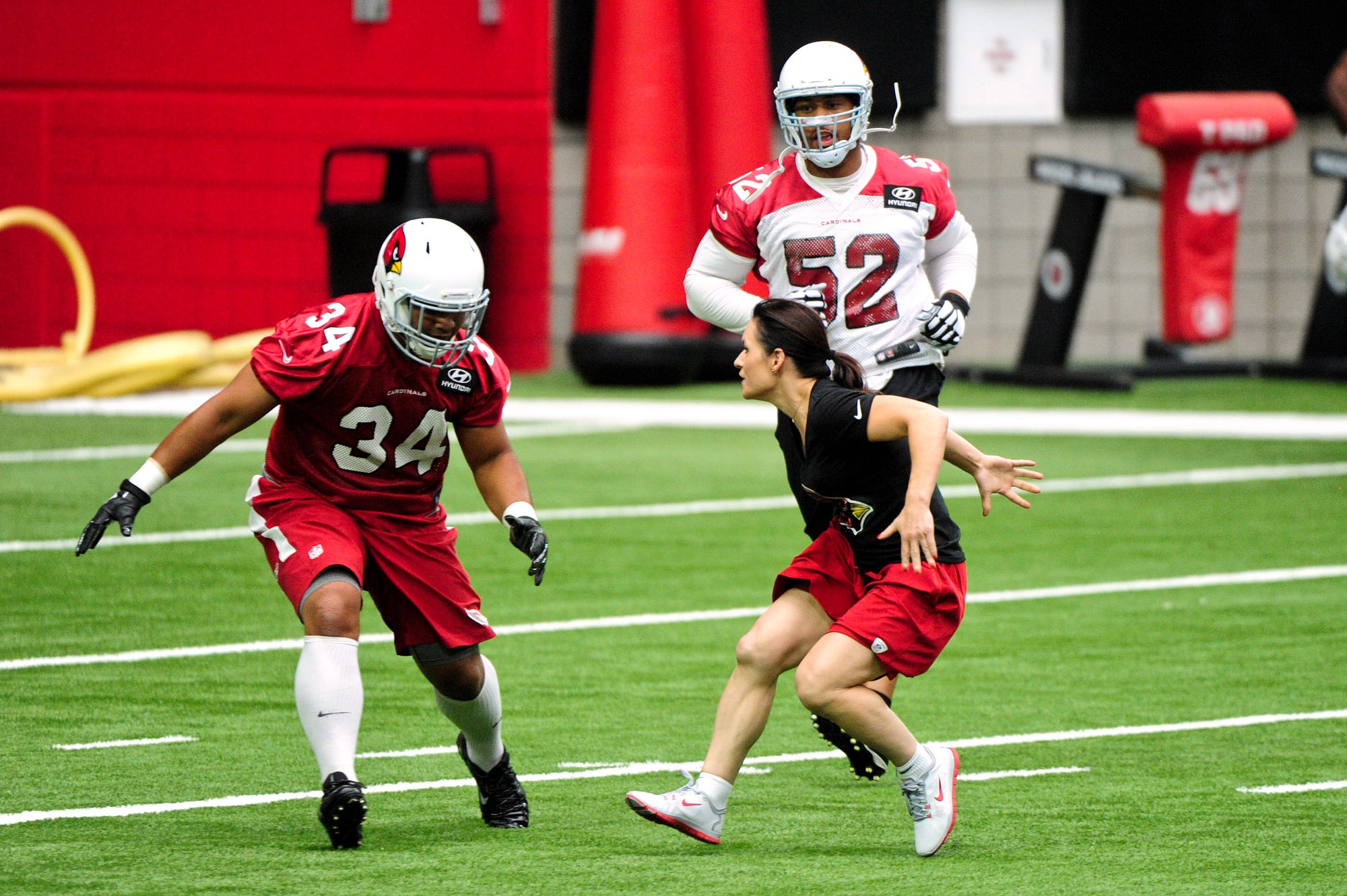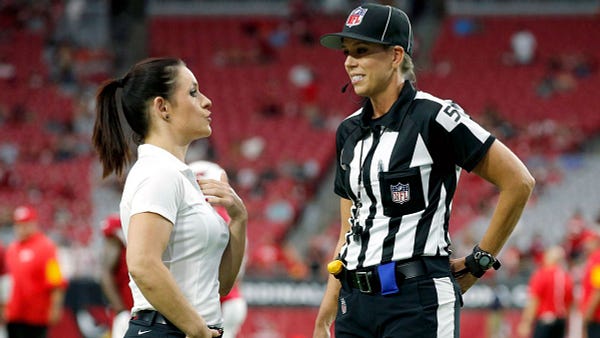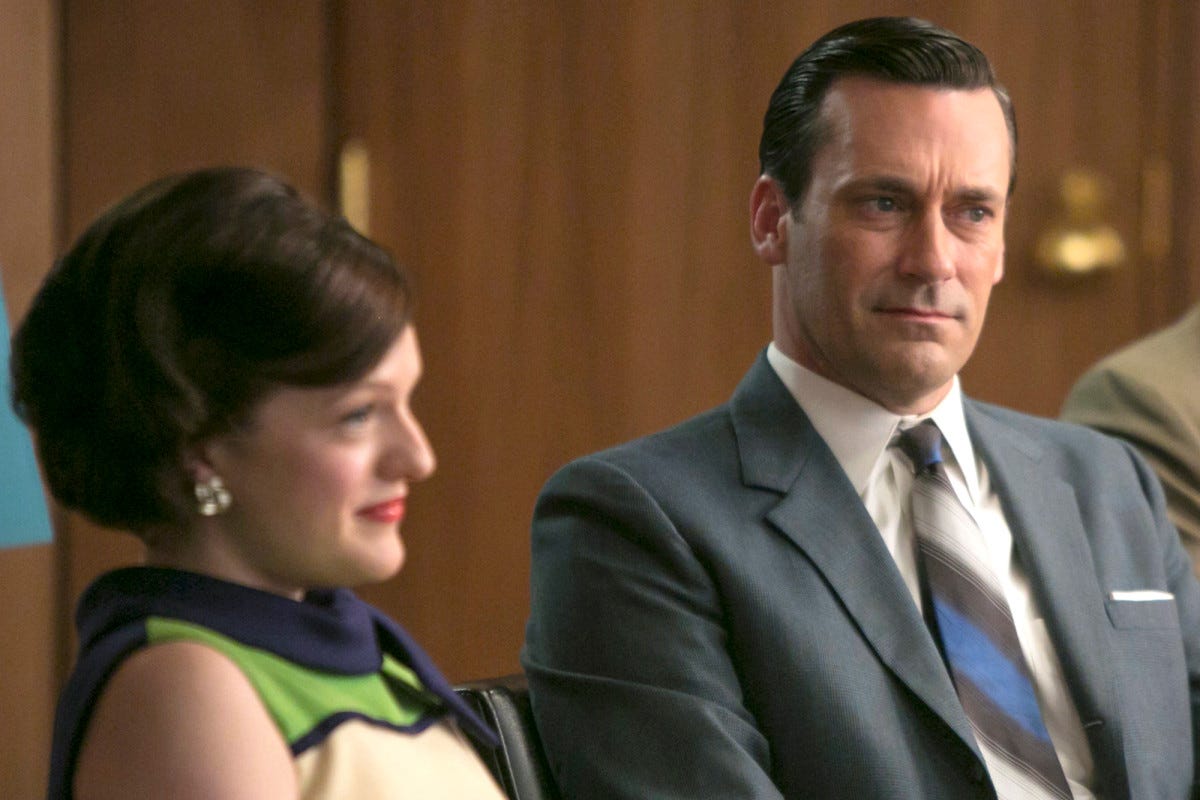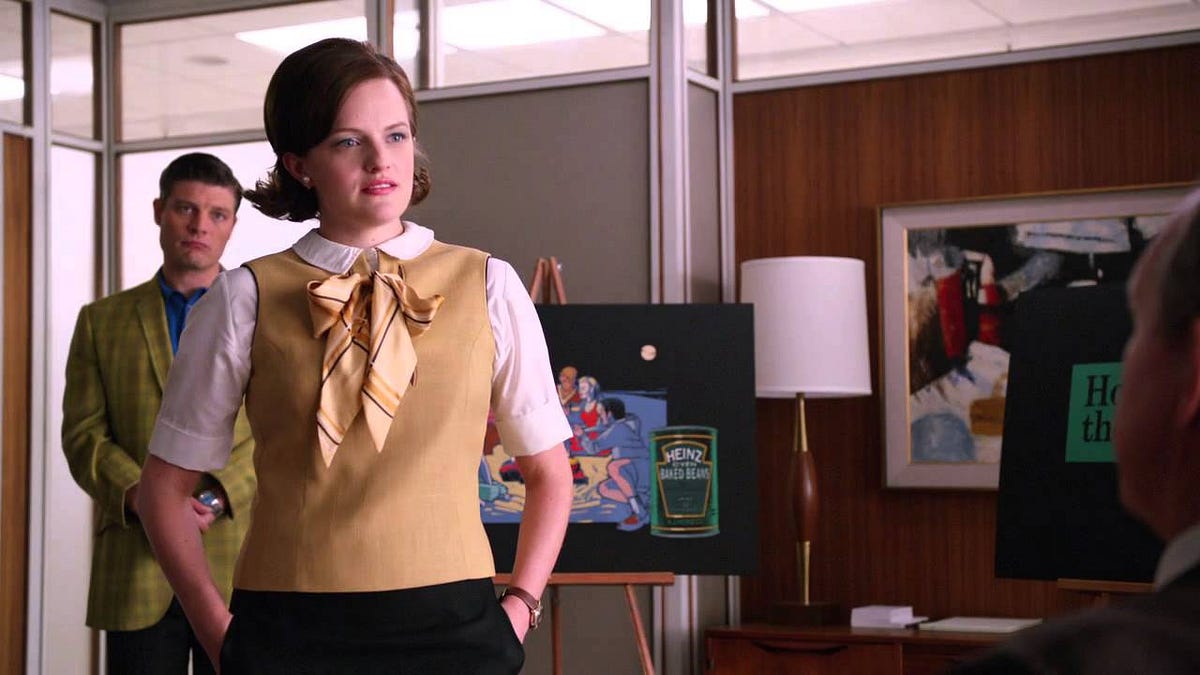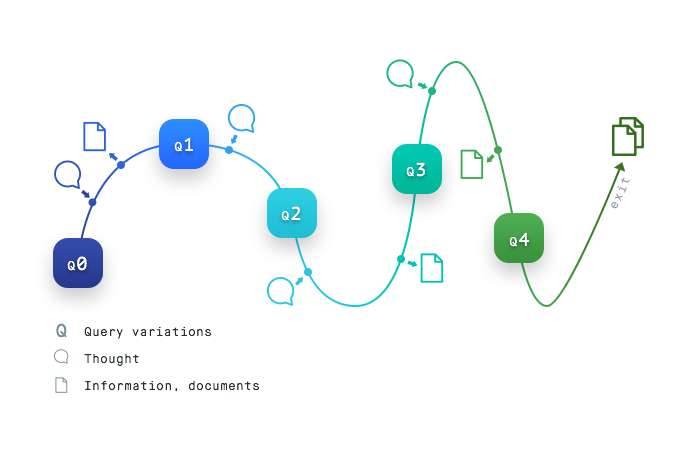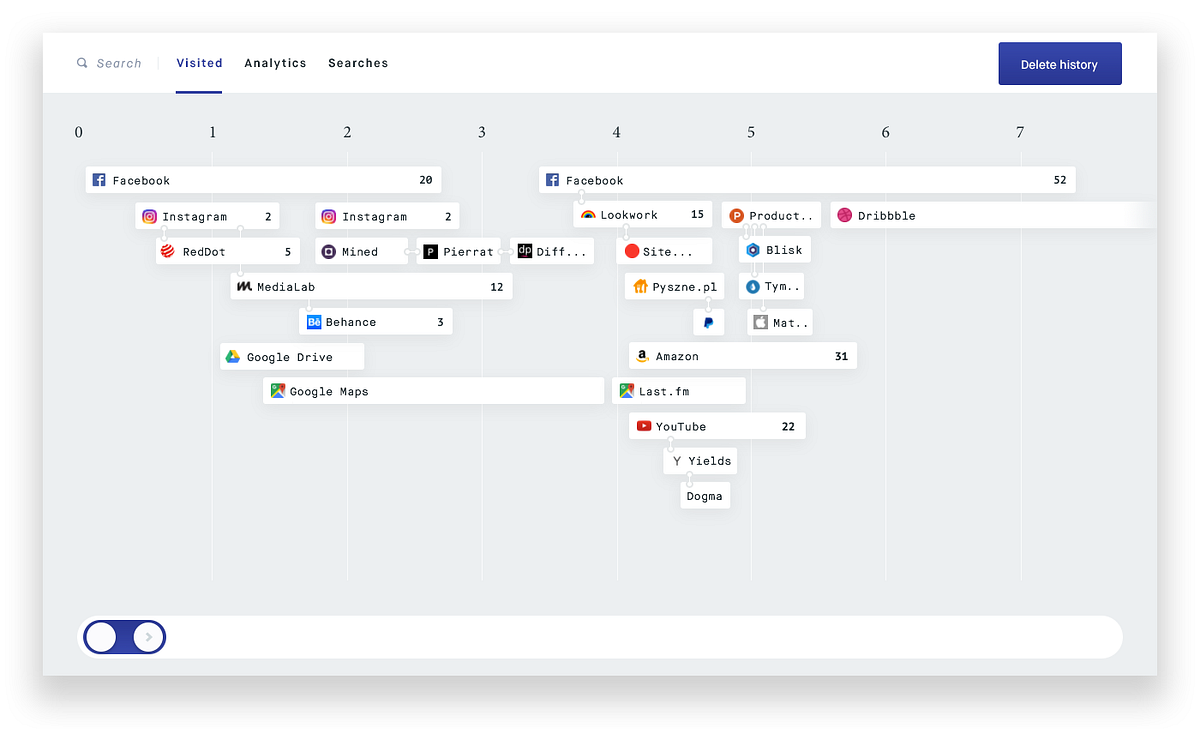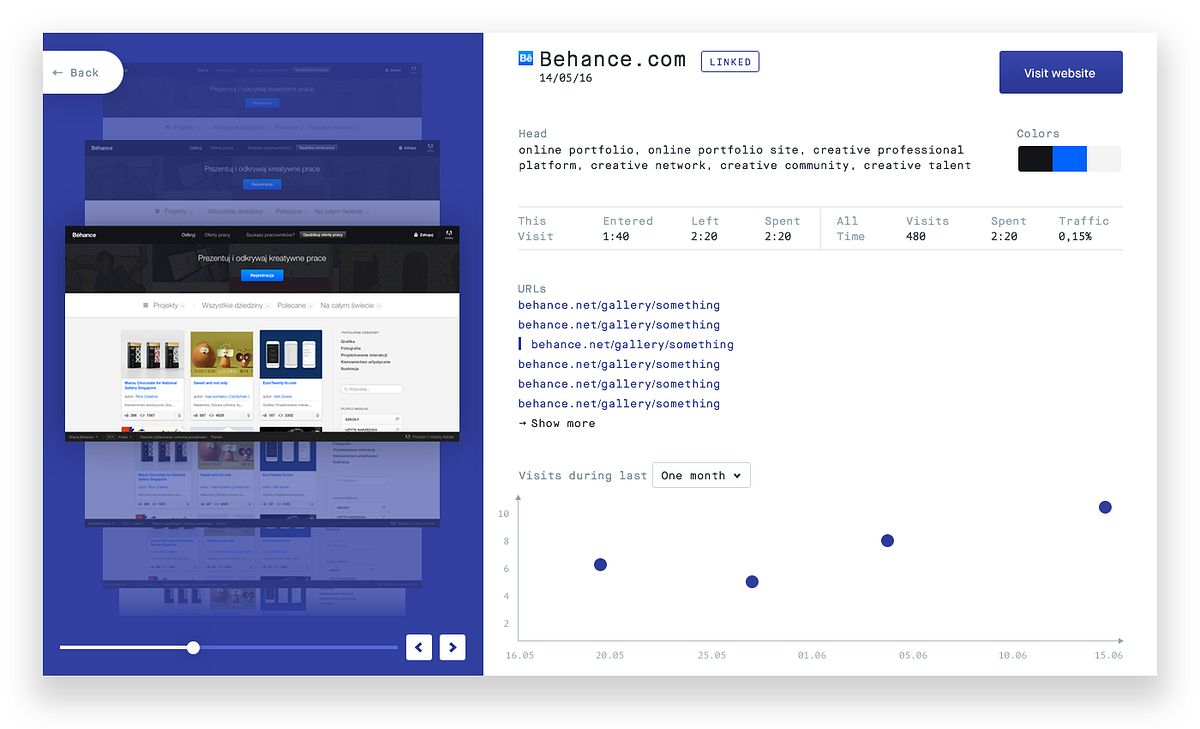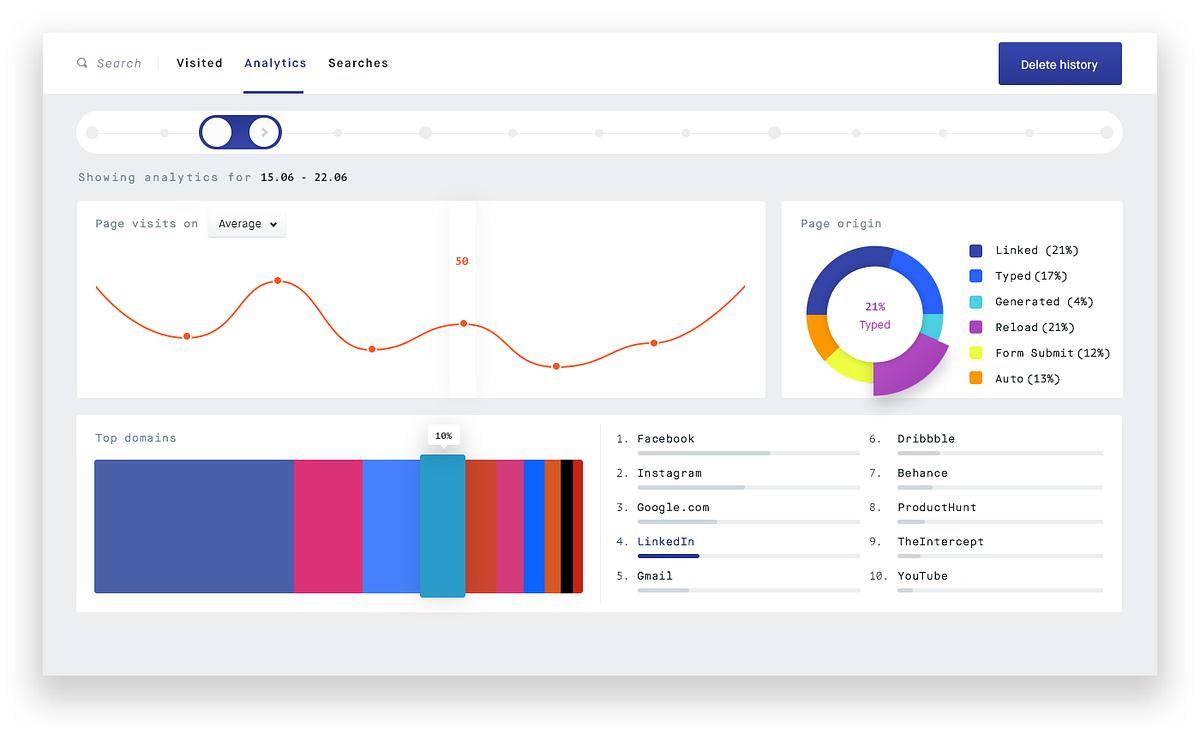- **Skye and The One Republic (Deal, Not Free) by Bryan Kelsey. Price: $2.99. Genre: Epic Fantasy Deal, Sponsor, Dystopian, Coming of Age, Epic Adventure. Rated: 4.4 stars on 47 Reviews. 302 pages. ASIN: B016XQY1T0. ISBN: 1517579171.
- ***The Ugly Princess: The Legend of the Winnowwood byHenderson Smith. Price: Free. Genre: Fantasy, Sponsor, Princess Story, Fairy Tales, Folk Tales & Myth. Rated: 4.8 stars on 92 Reviews. 234 pages. ASIN: B01EIG2D7Y.
- *Finding the Raven by Patty Dickson Pieczka. Price: Free. Genre: Fantasy, Coming of Age. Rated: 5 stars on 9 Reviews. 256 pages. ASIN: B01E11ILY0.
- *Immortal: Curse of the Deathless by Derek Edgington, David Leahey, Jeff MacMillan. Price: Free. Genre: Dark Fantasy, Sponsor, Fantasy, Satire. Rated: 4.8 stars on 13 Reviews. 319 pages. ASIN: B01F0ING16.
- **Ren: The Man Behind the Monster by Sarah Noffke. Price: Free. Genre: Fantasy, New Adult & College, Paranormal & Urban. Rated: 4.8 stars on 58 Reviews. 207 pages. ASIN: B016FU5K1M. ISBN: 1519210876
- *Pandemonium: Devourer of Souls by Derek Edgington, David Leahey. Price: Free. Genre: Dark Fantasy, Sponsor, Satire. Rated: 4.2 stars on 6 Reviews. 18 pages. ASIN: B017CTHWQ6.
- *Sins of the Father (The Legacy Chronicles Book 2) (Deal, Not Free) by Luke Romyn. Price: $0.99. Genre: Fantasy Deal, Sponsor, USA Today Bestselling Author, Post-Apocalyptic Fantasy. Rated: 4.7 stars on 32 Reviews. 468 pages. ASIN: B00DI6NF4G. USA Today Bestselling Author Luke Romyn.
- *The Bow of Destiny (The Bow of Hart Saga Book 1) (Deal, Not Free) by P. H. Solomon. Price: $0.99. Genre: Fantasy Deal, Sponsor, Epic Fantasy. Rated: 4.3 stars on 12 Reviews. 302 pages. ASIN: B014AZ5DMU.
- Black Moon Sing (The Turquoise Path Book 1) by L. M. Hawke. Price: Free. Genre: Fantasy, Witches & Wizards, Paranormal & Urban. Rated: 4.3 stars on 6 Reviews. 139 pages. ASIN: B01HXEOR6S.
- True Fire Book 1: The Ring Of Truth by B. Cameron Lee . Price: Free. Genre: Fantasy, Sword & Sorcery. Rated: 4.4 stars on 5 Reviews. 447 pages. ASIN: B01GJ5LTTK.
- Martinis with the Devil: Part One (Zyan Star Book 1) by A.A. Chamberlynn. Price: Free. Genre: Fantasy, Paranormal & Urban. Rated: 4.1 stars on 9 Reviews. 154 pages. ASIN: B01CXT1RR0.
- *Aurora Sky: Vampire Hunter Box Set (Books 1-3 + Novella) (Deal, Not Free) by Nikki Jefford. Price: $0.99. Genre: Fantasy Box Set Deal, Sponsor, New Adult. Rated: 4.7 stars on 15 Reviews. ASIN: B01GSAR32I.
- *Shadowed Flame by RJ Blain. Price: Free. Genre: Fantasy, Paranormal & Urban. Rated: 4.8 stars on 10 Reviews. 290 pages. ASIN: B01FPSJNGS.
- *Pandemonium: Devourer of Souls by Derek Edgington, David Leahey. Price: Free. Genre: Dark Fantasy, Sponsor, Satire. Rated: 4.2 stars on 6 Reviews. 18 pages. ASIN: B017CTHWQ6.
- *The Gopher & the Erstwhile Wizard by J.L. Rallios. Price: Free. Genre: Fantasy. Rated: 4.8 stars on 9 Reviews. 311 pages. ASIN: B00V8N37HQ.
- *Deviants of Giftborn (The Etherya Series Book 1) (Deal, Not Free)by Zuri Amarcya. Price: $0.99. Genre: Fantasy Deal, Sponsor, New Adult & College Fantasy, Epic Fantasy. Rated: 5 stars on 1 Reviews. 385 pages. ASIN: B01I0GDS7C.
- *Sins of the Father (The Legacy Chronicles Book 2) (Deal, Not Free) by Luke Romyn. Price: $0.99. Genre: Fantasy Deal, Sponsor, USA Today Bestselling Author, Post-Apocalyptic Fantasy. Rated: 4.7 stars on 32 Reviews. 468 pages. ASIN: B00DI6NF4G. USA Today Bestselling Author Luke Romyn.
- Bright’s Passion (God Of Light #1) by E.B. Black. Price: Free. Genre: Fantasy, Romance. Rated: 4 stars on 5 Reviews. 229 pages. ASIN: B01BU2N93Q.
Jul 16, 2016
Free Kindle Books – Fantasy
Jul 14, 2016
The Pink Ghetto of Social Media By Alana Hope Levinson
In news organizations, female leaders outnumber men in only one division. What does that mean for the future of women in the newsroom?Myboss brought up the infamous Cheerios tweet on my first day. Almost a year had passed, but it was still a cautionary tale: At 8:06 pm on a casual Wednesday night, a seemingly innocuous tweet was sent out and quickly caused a firestorm. Within 24 hours, Republican National Committee Chairman Reince Priebus called for a boycott of the network and the president of MSNBC had to issue a formal apology. Unsurprisingly, they said they had “dismissed the person responsible.”
Horror stories of Social Media Editors Gone Wild are a dime a dozen, and I was keenly aware of all of them over the eight months I spent as an engagement editor at a political news site. Every terrible tweet that went viral contributed something different to my near-constant state of anxiety. I’d frequently imagine myself as that MSNBC employee, getting a talking to for a social media post that showed too much Democratic leg, or being the subject of a blog post for attaching the wrong picture to a tweet. If constantly being on social media wasn’t enough make me lose sleep, there was also the prospect of potentially sparking an entire day’s or week’s conversation with as little as 140 characters.
Even inside the politics of the newsroom, the pressure was high to perform. In a culture of fast-paced digital newsrooms where traffic is king, “social” can make or break a story. For sites relying on advertising as their bread and butter, social media editors help to save the newsroom from inevitable slumps in traffic. (For context, BuzzFeed, whose numbers are the envy of the online news industry, gets 75 percent of its traffic from social media). My work was critical to the success of my colleagues, reporters and editors with high page view goals— a reality that was both empowering and stressful.
I thought it might help to reach out to other social media editors to see how they were handling the pressure. I noticed a pattern: a shocking number of them were also women. I already knew that, statistically, women use social networks more than men. But additional research revealed that social media is one of the few areas of the news industry where women outnumber men in leadership positions. A study by the Colorado Women’s College at the University of Denver found that women are only 23.3 percent of leaders in media at large, but in social media that number is 55 percent. The role of social media editor stands in opposition to that of writer or editor, which is still predominantly male. The Women’s Media Center annual report found that only 37.2 percent of newsroom staffs were made up of women, a figure that has gone nearly unchanged since 1999.
How do these statistics play into the culture of the newsroom? As a possible explanation, Taylor Lorenz, a social media strategist and editor, says that in her experience “women are not encouraged as much to get into hard news.” Similarly, many other social media editors who work in the industry (some of whom wish to remain anonymous) describe the perception that social media is a “girly job.” One woman notes a vibe of “let’s give this easy job to a girl, she can handle it” around the office; that social media is seen as easier, “fluffy,” and not on par with other editorial roles. Even though it’s no secret that social media is critical to the current business models, one woman who works as a social media editor in news thinks “the position is always gonna be viewed as some dumb 20-year-old woman job.”
Young women today are looking to break into a news industry that’s concurrently trying to diversify and beefing up social media jobs; it’s no wonder that a lot of them end up in these roles. But Amy King, chair of VIDA: Women in Literary Arts, says women have long been cast as supporting players in the office. “Think of the classic trope of the secretary who does the work that her boss is actually getting all the credit for,” she says. The volunteer organization has done groundbreaking work in tracking the abysmal byline gender gap by combing through select national magazines annually for the past six years. The studies have revealed a persistent woman problem: “Women tend to do the behind-the-scenes work that is unrecognized or unappreciated,” King adds, partly because they are willing to.
It’s hard not to hear these stories and draw a parallel to public relations, an industry where 85 percent of workers are women. “People in the media like to say that PR is a pink ghetto,” because the often low-prestige jobs are almost exclusively populated by women, says a female editor, who left her job in social media at a major news organization. “But social media is the true pink ghetto.” She says her time in her previous role was characterized by unpaid overtime and a dearth of promotions and raises.
In her 2014 Jacobin magazine piece “Pink Collar,” Jennifer Pan explores why the entire PR industry is so heavily judged by the media, despite being critical to the news-making process. She posits that the “spoken heart of their criticism is the failure on the part of the publicist to adequately conceal that she is performing emotional work for money”:
The palpable distaste for PR practitioners that continues to swell — spearheaded by the very same members of the media with whom publicists theoretically enjoy a symbiotic relationship — requires, then, a deeper look at how gendered assumptions about work continue to shape our contemporary notions of creative labor under capitalism.
Though a field like social media requires a more direct relationship with a consumer than public relations, they both, at their essence, involve promotion; and they’re both — if done well — invisible. The newsroom’s social media manager doesn’t tag her tweets with her name, and the “flack” gets no byline when he gives a journalist access to a source. Unlike the job of editor, which also goes uncredited, these positions don’t have a high level of prestige.No one brags over martinis that they wrote the Facebook prompt for a Gay Talese piece.
“In my experience, women are the ones behind the scenes, just keeping the day-to-day process of the magazine running,” says Annie Shields, engagement editor at The Nation, where I was an intern in 2009. “[They’re] editing, polishing things up, and not getting credit.” Shields observes that although the editorial staff at the publication is largely female (the editor-in-chief is a woman), that doesn’t translate to content (only 29 percent of all Nationarticles are written by women). Men are in more visible roles, Shields says, ones that allow them to make media appearances and become well-known brands. For these guys, there is a straighter path to advancement, to becoming an opinion writer or thought leader in politics.
This element of invisibility begs many troubling questions: When an article blows up on Facebook, who gets credit? The reporter who wrote the story or the engagement editor who came up with the prompt? And who takes responsibility for the “frequent occurrence of criticism of the company getting channeled through social media” that Pan recalls dealing with on a daily basis? During her two years working in book PR, which involved running the publisher’s social media channels, Pan says she would often field tweets from people who hated certain books or editorial choices: “I wasn’t really making the decisions [about what books to publish], but I was acting as the buffer between the outraged public and the company.” The experiences left her feeling frustrated, and she ultimately left.
As I know personally, being this kind of middle man can be particularly exhausting, especially in political news. In order to be effective, I’d need to rewrite headlines to make them more conversational and “social media friendly.” But this, of course, would inspire some readers to email or comment that I was ruining the organization with “clickbait” — something that only added to my stress level. Writers, especially those that are pushing boundaries, get criticized too. But they have the advantage of resources like editors and fact-checkers (and the ownership of a byline). At a smaller news organization, social media editors are often writing tons of copy that never gets looked over. One weekend, Shields remembers making a typo in a Facebook prompt, and returning on Monday to hundreds of nasty comments about “the 20-year-old idiot intern” that must have made the mistake. “The criticism is over the top,” she says. “I don’t know if other people at the magazine know what that’s like.”
The emotional toll social media jobs can take isn’t balanced by the security of an established career trajectory. “I was given increasing responsibility, but not increasing opportunity,” says the former female social media editor I spoke to. She, along with others I talked to, mention a kind of topping out that happens in the social media track, unlike other positions in the newsroom, like the path from cub reporter to writer to editor. That can be great for rising fast, but challenging longer-term. “There’s a limit to what you can do in a small organization in this role,” says Shields — one reason why she doesn’t see herself in it for the long haul. When she started to excel at her job, she was given new editorial duties like homepage editing, but was still expected to do all the old social media tasks. That’s not really a promotion or a job change — “it’s a recipe for burning out.”
Not everyone who works in social media feels drained, or wants to move on to the glory of writing. For some, the creativity of hyping journalistic work, and the mastery of analytics that often comes with it, is a destination in and of itself. Depending on the outlet, the job can involve tasks as varied as audience growth, original content creation, and breaking news. Lorenz, after a stint editing and reporting, went back to social media because she found she preferred the challenges of strategy and development. Similarly, Rubina Madan Fillion, the digital engagement editor at the Intercept who spent years doing social media at the Wall Street Journal, has always been an early adopter of social networks and finds her job to be a natural fit. “There’s just a lot more interaction with readers and the community [in social media],” she says. “It’s more interesting.”
Whether one finds social media personally compelling or not, its increasing importance to media companies is undeniable. Take “the dress,” Buzzfeed’s viral phenomenon that garnered 28 million views in 24 hours and brought issues surrounding social media and virality to the forefront. The post required the company to enlist additional tech support to manage the servers, and two editorial teams were tasked with finding new angles on the story. Many don’t know that “the dress” was not brought into mainstream consciousness by a reporter. It was Cates Holderness, a Buzzfeed community growth manager, who ran the organization’s Tumblr. When a reader messaged a question about “the dress,” Holderness thought it would make a good post. “It took me five minutes,” she told Digiday, who called her a “celebrity” in this interview. “I just pasted the Tumblr embed code and put up a poll.” (Holderness’ title is now Tumblr Editor at Buzzfeed BFF, a team that makes original content for social media sites and apps.)
Lexi Mainland, managing editor at A Cup of Jo, and the editor who led The New York Times’ first (almost all female) social media team, points out that the emerging field “can be a little bit of a back door, because it is a role that respects a different skill set.” She says many of her former female colleagues who started there at The New York Times have gone on to more traditional reporting roles within the company. I’m living proof of her observation: When I realized I wasn’t cut out for the social media editor game, I was able to parlay my experience into a staff writer position here at Matter. [I’m told I wouldn’t have gotten it without my social media expertise.]
Is there a downside to the increasing mainstream recognition of social media as a truly valuable editorial skill? Tiffani Lennon, the lead researcher and author of the University of Denver study on women’s leadership, says she thinks so. “If social media gets more credibility, you are going to see men pushing women out of leadership roles,” she says. “That’s what happens in every field once it becomes more institutional.” Historically, it’s been easier for women to dominate spaces that men don’t want to be part of.
Wallpaper’s associate editor of Audience Daisy Alioto doesn’t see things quite so bleakly. At just 23 years old, she held the title of director of social media and analytics at the International Business Times. Alioto thinks that part of what’s great about working in social media is that a lot of the old guard media men don’t get it, and in their ignorance, give young women carte blanche. Plus, maybe these ladies will stick around: “In another ten years, social will be a given. We will all be working on some other crazy iteration that’ll be dominating news,” she says. “And the industry will be run by all the women that got their start in social media.”(Source photos, from top: Bert Hardy/Picture Post/Hulton Archive/Getty Images; SSPL/Getty Images)
Winning in the Boys Club - The First Female Coach in the NFL
My gold medals are two of my greatest treasures. I won them as a member of team USA at the International Federation of American Football’s (IFAF) Women’s World Championship. Alongside the medals, I keep my first ever paycheck as a professional football player: $12 for an entire season.
I had never dreamed any bigger than that. Being the first female coach in NFL history isn’t why I started playing football. Now, because of me, that’s a dream that other girls can grow up with. This is the inside story of how I broke down the barriers of tradition, history, and what was comfortable to play in a men’s professional league, then to coach in a men’s professional league, and finally to get hired as a coach by the Arizona Cardinals in 2015.
Too often, people assume that “breaking the glass ceiling” means overcoming the resistance of men. I have experienced the opposite. My male mentors are the ones that made my dreams a possibility.
It all started in January 2014 when the Texas Revolution, a men’s Indoor Football League team, invited me to training camp. They weren’t just inviting me to watch — they were inviting me to train as a player and to take the field in their preseason games. I was considered one of the top female tackle-football players in the world at the time. Revolution GM and former Oakland Raiders wide receiver Tim Brown said it was an opportunity to showcase my talent as a female athlete. They considered me a long shot to actually make the team roster, but I still took the job.
It was February 15, 2014 when I entered my first game. It was still preseason and we beat the North Texas Crunch, 64–30. I finished with three rushes for a loss of a yard, but it was still one of the best days of my life. I proved that I could get back up when I got hit. I stood back up and asked the Crunch player who tackled me, “Is that all you got?”
Four days later, I was named to the 2014 regular season roster. I made the team and became the first woman to play running back in a men’s professional league. The stakes were too high at practice for me to be treated any more gently than the male athletes. Players were competing for their ability to stay on the team, and for their very livelihood, so they didn’t have the luxury to just step aside for the girl when I rushed through a gap. I took my hits play after play, lined back up and did it again, that’s football.
Taking the field as a player was only the first step in my journey against the odds. The following year, on February 2015, I was introduced as the Revolution’s new linebackers and special teams coach. At first, I turned down the offer. “Jen, very few men are ever going to give you this opportunity,” the Revolution Head Coach Wendell Davis told me. “You’re taking this job.”
It wasn’t easy. At first, some of the guys on the Revolution did not think a woman could coach football. Though they had respected me as a player, many thought a woman coaching was a complete joke. But once I actually began coaching them, these same players changed their opinions entirely. My head coach at the time was former NFL player Devin Wyman and I’ll use his explanation of why those players started to take me seriously. I’m using his account because these are also the words he used when he first convinced Arizona Cardinals head coach Bruce Arians to give me a chance in the NFL.
:: Follow every source on your favorite NFL teams in a personalized newsfeed. Download for free: chatsports.com/app ::
“She thinks differently, but it’s really good to have that on your staff,” Arians has said. Photo credit: azcardinal.com
Coach Wyman honored me by comparing me to one of the greatest coaches in history: Bill Parcells. He played for Parcells in 1996, and had seen firsthand what a legendary, championship coach was — and saw the same thing in me. Wyman also told Arians that I broke down film exactly the way Parcells did, creating smaller, more digestible chunks to help players understand. Once I displayed my deep knowledge of game tape and my vision on the field (as Wyman explained), respect as a coach followed instantly.
Let me back up. Why was Coach Wyman calling up Bruce Arians on my behalf in the first place? It was because of a comment Coach Arians had made at the NFL Owners meeting that March. Arians said that he believed a woman could coach in the NFL if she could make players better — and that struck a chord with my head coach. So he called him up, and related what I just told you: how I won respect with my coaching prowess. At the end of the call, Arians asked him if I might be willing to join the Cardinals staff as a training camp intern.
When Wyman told me about the call, I was in shock. It took a full day for me to even believe he was serious. I kept asking him, “Really? Coach Bruce Arians? I know you know a lot of people, but really?!” I was sure it would fall through. I even made Coach Wyman promise not to tell anyone on the team that I was being considered. I thought that if word got out, a storm of controversy would squash my dream.
In late May, I was invited to Cardinals OTAs in person to meet the coaching staff and team. “I saw the passion and energy of the person I’m looking for,” Arians said of my visit. But he couldn’t offer me on the job quite yet. He pulled me aside. “This is the right staff, this is the right team, and you are definitely the right woman,” he told me. “I don’t know yet if I can make this happen. I have to get all the right yeses, but I want you to know that it’s in my heart to try.”
After OTAs in May, I waited and waited. But I hadn’t heard had any contact with Cardinals, so I was ready to give up. But when the Revolution made it to the championship game, I used it as my reason to call Arians and let him know. “That’s great, Coach,” Arians replied. “You got a lot of work to do. Go ahead and win that thing. By the way, this internship is going to happen. I’ll give you details next week.” With those words, the chance of a lifetime was mine for the taking. With those words, Bruce Arians became the man who opened the door for women to coach in the NFL.
Photo credit: BBC
I joined the staff as one of seven interns brought on board that year, coaching inside linebackers under two-time Super Bowl champion Larry Foote. Larry is the ultimate player’s coach because he transitioned from being a team captain and leader on defense to being a coach in the space of just one season. He was incredibly smart and translated the plays so easily. Above all, he was practical, telling players exactly what they needed to do to excel — and they loved that. In that way, our approaches were extremely similar. We didn’t pull any punches.
Our communication styles were a bit different, but we complemented each other. Larry is from Detroit, so he wouldn’t know how to sugarcoat something if he tried. I had a bit of a softer touch, so sometimes we played the good cop-bad cop roles. If I were still playing, it would be my dream to learn from someone like him.
The pressure of training camp is unreal. Players are thrust together to compete for a roster spot, while also working to unite as a team. To fight off the fatigue and keep players awake, we had to keep the meeting rooms extremely cold — shocking their systems from 115-degree Arizona heat. They have a demanding schedule each day and their professional future is on the line. Family is often far away, and even if they are in town, time is severely limited. Players draw a lot from each other, but at the same time, there is a fear of getting too close. Out of the 90 men at training camp, at least 30 will be gone once the season starts.
It truly felt like I had stepped into the reality show Survivor since every single minute was caught on tape, only we also had a playbook as thick as the Bible. The volume of the tape alone was daunting. My greatest surprise was just how much film we watch in the NFL. As a coach, you watch the film from every practice, and then review that film with your players in individual groups and then again in defensive meetings as a whole.
The critics promised me that men in the NFL would never take coaching from a woman. Cardinals linebacker Kevin Minter, who I became extremely close with, told me he was scared the carefree vibe of the linebacker group might change with a woman present. But once I showed them that I was up for the jokes, for the swear words, and for the uncensored talk, we became family. I also treated them as people, not just performers. At work, we get too caught up in the number of tackles someone’s made or how many deals they’ve closed. Building real friendship and valuing the person behind those stats enhances performance. It also made it easy for my players to be themselves around me.
What was it like to be a woman in a men’s locker room? That’s a question I get all the time, but it was a non-issue. Coaches rarely hangout in the locker room before or after games when players are changing. Of course, I went in at halftime or for scheduled meetings. But other than that, the team gathered in meeting rooms throughout the facility or huddled up on the field. So that scenario never really came up.
Locker room aside, there were plenty of funny, awkward moments. I remember one of my players responded to an instruction with “yes, ma’am” instead of “yes, coach.” He realized instantly and apologized so profusely that I had to put him at ease. “I will never be mad at you for good home training,” I told him. “You can call me ma’am, you can call me doc, you can call me coach … Just don’t call me a ‘B’.” It was one of the more infamous moments during all of camp.
Treat me like one of the guys, but it’s okay that I’m still a woman — that was the atmosphere I tried to foster. For example, I was walking beside my fellow coaching intern Rashied Davis, former Chicago Bear. I had tons of equipment with me. He turned to me and said, “I don’t care how tough you are, I’m still carrying your bag.” I handed it over with gratitude and we both laughed.
The players were truly excited for me, and to be a part of this momentous step for women. “Coach, do you realize this is history?” “Coach, you are so tough, I can’t believe you played with guys!” “Coach, we watched your highlight reel, you were a beast off the edge.” It still makes me smile.
I told them that whether their issues were about football or about life, if I could help them, I always would. I guess this is why we were all football on the field, and yet we would talk about life in the hallways. Some of my favorite moments started with “Coach, do you have a moment?”
I knew I had gotten past any preconceptions and become a real insider when players wanted to introduce me to their families. I never realized how many of them already had a female coach in their lives — the moms, grandmothers, or aunts who raised them. Entire families devote their lives for an athlete to ascend to this level in their career. And for many of my players, a huge female presence in their lives had guided their path. One told me that he had never seen his mom cry until she met me, and I told her what an incredible man she created. “We’re proud of what you’re doing with our boys,” she said tearfully.
I loved meeting the fathers, too. One shook my hand and said, “I didn’t know what to think with a woman as I coach.” “I didn’t either, Dad.” I replied and we both laughed. He went on, though. “I didn’t know what to think, but my son just loves you. So I guess what I’m trying to say is … thank you.
We teach athletes never to admit fear and never to admit weakness, but that doesn’t mean they aren’t human. I knew going in that I was working with some of the best athletes in the world, but what impressed me most was how great they were as people. My time in training camp and OTA’s taught me that many people underestimate the caliber of men that are in the National Football League.
In our first preseason game, I wrote notes to my players and left them in their lockers. I wrote memories from camp, words of encouragement, reflections on their best moments, and inside jokes. I never realized how powerful the response would be.
As Cardinals linebacker Kevin Minter told the Associated Press, “She’s a stickler about fundamentals, but she knows a lot about making you better as a person, too — with the notes she left on your locker, the words of encouragement from what she sees on film. She was a real good person to feed off of.”
I think that’s what coaching truly is: the ability to lift someone up and to change his or her life for the better. So many of my mentors have done the same for me, and that’s the only reason I’ve been able to blaze my trail and open these doors for other women.
Welter with Sarah Thomas, the first female official in the NFL in 2015. Photo credit: Kickoff Coverage
My coaching internship with the Cardinals ended on August 31, 2015. Even though I’m no longer with the team, I gained so much from my experience and was able to open the door for other women in the NFL. This past January, Buffalo Bills Head Coach Rex Ryan was considering hiring Kathryn Smith as a full-time coach. He placed a call to Bruce Arians to consult him on how it worked having a woman on staff. Not too long after, he hired Smith as their quality control and special teams coach — the first full-time position offered to a woman. I’m proud to be one chapter in the story of progress.
These days, I’m launching NFL Play 60 in Canada. I get to coach children every day and show them that the dreams you once considered impossible really can come true.by
Dr. J First Female Coach in the NFL, AZ CFollowingardinals. Boston College, MS Sport Psychology & PhD Capella. 14 years Women's Football. yes, anything is possible.
Jul 12, 2016
The Emergence of Synaesthesia in a Neuronal Network Model via Changes in Perceptual Sensitivity and Plasticity by Oren Shriki , Yaniv Sadeh, Jamie Ward
Architecture of a general network model for studying synaesthesia.The network consists of two interacting modalities. Each modality has a set of input neurons and a set of output neurons. There are feedforward connections within each modality but not between them. There are recurrent connections among all output neurons. The subset of recurrent connections that connect the two modalities are referred to as cross-talk interactions. The goal of the network is to optimize the representation of the combined input from both sets of input neurons, by the neurons at the combined output layer.
For the last twenty years, theories of synaesthesia have been dominated by two general models: disinhibited feedback from multi-sensory regions to uni-sensory regions, and cross-talk theories which have emphasised the presence of atypical (and direct) structural connectivity between modalities [33]. Whereas the former explanation has tended to be favoured for explaining acquired synaesthesia, the latter has dominated explanations of developmental synaesthesia. The approach taken in our computational model represents a significant departure from this current status quo, and has generated novel insights. Our model repositions synaesthesia not as some quirk of aberrant connectivity but rather as a functional brain state that emerges, under certain conditions, as a consequence of optimising sensory information processing. In short, this model goes beyond others by offering an account not only of howsynaesthesia emerges but also of why synaesthesia emerges. It offers a unifying account of acquired and developmental forms of synaesthesia insofar as it explains how the same outcome can emerge under different conditions within the same model.
Acquired synaesthesia is often associated with sensory deprivation due to damage to the sensory organs or pathways. Our model proposes that the same learning process that optimizes information representation naturally causes neurons in the deprived modality to enhance incoming inputs from intact modalities, leading to synaesthesia. To provide some intuition, we note that our model maximizes the output entropy of the network, which depends on two factors: one is the entropy of each single neuron, i.e. how variable the activity of single neurons is, and the other is the correlations among the neurons. Maximizing this entropy favours high single neuron entropy and low correlations among the neurons. The cross-talk connections induce correlations between the two modalities, which in general tend to reduce the output entropy. However, when one modality is deprived of input, it may be beneficial to have cross-talk connections from the intact modality to the deprived modality. The increase in the single neuron entropy due to the cross-talk connections can compensate for the higher correlations and result in a total increase of the output entropy. Loosely speaking, the deprived neurons seek for other neuronal sources of variability and enhance their connections with them. This mechanism, which emerges naturally in our computational framework, can also be useful for modelling the changes in neural representation that take place in other conditions such as phantom-limb [34].
Although functional accounts for acquired synaesthesia have been proposed in the past, no such comparable account has been put forward for developmental synaesthesia. Our model suggests that it arises from instability in the learning process due to high plasticity. It implies that synaesthetes have higher plasticity compared to non-synaesthetes or a relatively prolonged period of high-plasticity during childhood. Later on, as plasticity in the relevant brain areas decreases, the evolved cross-talk connections become stable. In line with this idea, whole-genome studies link some forms of synaesthesia to genes involved in plasticity, which have higher expression during early childhood [35]. Furthermore, developmental synaesthesia does not appear to be linked to sensory impairments and, if anything, is linked to increased perceptual sensitivities (notably within the concurrent modality). For instance, grapheme-colour synaesthetes show enhanced colour discrimination abilities [36]. In the proposed model, the recurrent connections within the concurrent modality amplify both its direct inputs and the ones from the inducer modality. Thus, an association between synaesthesia and increased perceptual sensitivity is an emergent property of the model, at least under certain scenarios, and it is important to explore the extent to which the presence of synaesthesia (cross-modal sensitivity) necessarily goes hand-in-hand with changes in intra-modal sensitivity. In terms of the underlying neurobiological mechanisms, the increased amplification by the recurrent interactions in our model is consistent with findings that indicate increased excitability and elevated glutamate concentration in the relevant cortical areas in synaesthetes [37, 38].
Traditionally, synaesthesia has not been linked to theories of learning and memory because it has been considered to reflect an innate (in its developmental form) cross-wiring of the senses. This view has been challenged on several fronts [e.g. 39, 40]. Firstly, many of the stimuli that induce synaesthesia (e.g. graphemes) are themselves learned. Secondly, for some synaesthetes the particular associations have been influenced by childhood coloured letter sets [13]. Moreover, some general cross-modal correspondences (e.g. between pitch and vertical positions) thought to reflect innate vestiges of synaesthesia have been shown to occur as statistical regularities in the environment [41]. Finally, synaesthetes (at least for grapheme-colour synaesthesia) are known to have better acquisition of new memories, and this may be related to increased plasticity during learning [32]. Future simulations of the model could use partially correlated inputs to the two modalities to model childhood exposure to coloured letter sets (they are not fully correlated given that most literacy exposure is with achromatic letters). It may well be the case that there is an interaction between learning rate (an innate parameter within the synaesthete brain) and these partial associations (in the environment), which explains why most people do not go on to develop synaesthesia after exposure to these stimuli.
An interesting hypothesis that emerges from this study regards the relationship between synaesthesia and the concept of critical brain dynamics [28, 42, 43]. The goal of the learning process in our model is to find the pattern of recurrent interactions that maximizes the sensitivity of the network to changes in its external inputs. In analogy to physical systems, in which the sensitivity (often termed susceptibility) to external inputs diverges near a critical point [44], here, as the network maximizes its sensitivity, it also tends to approach a critical point [28]. This critical point represents the border between normal amplification of external inputs and a regime governed by attractor dynamics. In the context of sensory processing, the super-critical attractor phase can be thought of as hallucinations that reflect the learned pattern of interactions. A useful measure for identifying critical dynamics is the time it takes the recurrent network to reach steady-state. When close to critical points, many dynamical systems display the phenomenon of critical slowing down [28, 45]. Interestingly, in simulations of the complex model in which synaesthesia evolved, when the learning process approached the optimal pattern of interactions, the dynamics of the recurrent network became substantially slower (the number of iterations required to process each input sample until reaching steady-state was ~35000–45000 compared to ~1000–4000 in the beginning of the learning process). This observation suggests that in the proposed model networks that developed synaesthesia operate closer to a critical point compared to networks that did not develop synaesthesia. The prediction is that there may be evidence of the neural signatures of critical dynamics in synaesthetes [46, 47], particularly as synaesthesia is developing.
In terms of its similarities to other models, our model resembles the direct cross-talk (or cross-activation) models proposed by others [48] primarily to account for developmental forms of synaesthesia. Although the model represents a direct form of cross-talk, it is an open question as to whether the model would produce similar patterns if neurons from modalities 1 and 2 were not directly connected but were themselves both connected via a third pool of neurons that receives no direct input from 1 and 2. There is some evidence for both direct and indirect types of neural architecture in synaesthesia as assessed via fMRI effective connectivity [49]. The addition of an interconnecting hub area in future modelling attempts would give the model top-down representations that could be adapted to the (Bayesian) predictive coding framework. Unlike the present (bottom-up) model, the predictive coding approach describes perception as top-down inference that is constrained and altered by sensory signals. A non-computationally explicit account of synaesthesia in terms of predictive coding has been articulated [50]. Moreover, the kinds of learning algorithms employed in our model are compatible with this approach [51].
The gradient-based learning rules used in this study are not local and are thus expected to reflect the long-term evolution of the system rather than mimicking the moment-by-moment dynamics of real neural circuits. In addition, the neurons in the model are described by simplified rate dynamics which do not capture the complex dynamics of real neurons. An important direction for future modelling work would be the examination of more biologically realistic networks that also optimize information representation. The scenarios for the evolution of synaesthesia described in this study are very general and we believe that similar scenarios would appear also in more realistic networks.In summary, these computational models permit new ways of thinking about synaesthesia both in terms of causal mechanisms and in terms of optimising perceptual function. It generates non-trivial outcomes (e.g. generating monotonic mappings not found in the input characteristics) and non-trivial predictions (e.g. relating to learning, unimodal perceptual sensitivity, hallucinatory tendencies).
Getting a raise comes down to one thing: Leverage. byQuincy Larson
Starring Peggy, the adversity-destroying careerist from Mad Men.Maybe you’ve been at your job for a while, and your salary hasn’t kept pace with your city’s cost of living.Or maybe they hired you at a below-market salary because you were new to the field.Whatever the reason, it’s high time you earned an at-market salary.But being a competent professional isn’t enough to get that raise you deserve. You’ll need leverage. And you’ll need to be prepared to use it.Talking about your salary may feel awkward. Or greedy. Or disloyal. Jam those feelings down the nearest garbage disposal.It’s OK to feel loyal to your boss. They hired you. They helped train you. They may even genuinely care about you.But any loyalty you feel toward your employer — that legal entity that employs you and your boss — is probably misplaced.This is, after all, the 21st century. If there ever was an era of lifetime employment and the “company man,” it has long since passed.Any loyalty you may feel toward your employer will not be reciprocated. New employees will be hired above you, with fancier job titles and better pay. When investors demand layoffs, your years of dutiful service won’t save you from the chopping block.Who profits when you decline a call from a recruiter out of loyalty to your employer? Investors.Who profits when you accept a standard annual raise instead of negotiating for a larger one? Investors.Who profits from a culture where employees keep their salaries to themselves instead of freely sharing this information with peers? Investors.In an opaque, imperfect labor market, investors profit at employees’ expense. And that’s who ultimately owns the company you work for. Not your boss, or your boss’s boss — though they may own some of it. Investors have extra money lying around, which they can risk on a speculative investment in your employer. They are the people who are profiting from your loyalty.Employers will use sketchy — even illegal — tricks to retain you.Many industries have secret agreements not to poach one another’s employees. This is good for employers, who can keep their wages artificially low as a result.The US Department of Justice recently reached settlements with tech companies who intentionally — and illegally — made it harder for employees to change jobs — companies like Adobe, Apple, Google, Intel, Intuit, and Pixar.Employers will use a carrot: “golden handcuffs” such as signing bonuses that you have to pay back if you leave within a certain period. Or stock options that take several years to fully vest. Or stock options that are intentionally designed to be too expensive to exercise, forcing you to stay at the company indefinitely or walk away with nothing.Other employers will use a stick: noncompete agreements, which prevent you taking a new job in the same field.Even though noncompetes are increasingly unenforceable, employers won’t tell you this. They’ll leave it to you to seek out a lawyer.The White House has condemned employers’ use of noncompetes as aperversion of their original purpose — which was to slow the spread of trade secrets. Instead, noncompetes have become just another tool for keeping you from leaving your current job for a better one.Despite all this, smart people change jobs all the time.It takes courage to leave a stable job in search of a better one. Especially when you have kids to feed, student loan debt to service, or a house to pay off. But people do this all the time.The average length of time that software developers stay at a given company is surprisingly short:
The circled numbers are the median length of a developer’s tenure at the company. Read the full study here.
Which brings us to the most important rule for negotiating your raise.
Be prepared to walk away.If you want to have any leverage at all in your salary negotiation, you need to be prepared — financially and psychologically — to actually to leave the company.If your employer has succeeded in lulling you into a complacency where you dine on fancy meals and lease expensive cars instead of saving — if you are like 62% of Americans who are one pay check away from living on the street — you will have zero leverage in the negotiation. Because your employer can just say “no” and there’s nothing you can do about it.So before you initiate any sort of salary negotiation, you need to establish a Best Alternative to a Negotiated Agreement (BATNA). Your BATNA is your recourse if negotiations fail.Attempting to negotiate without a BATNA will waste your boss’s time, and weaken your position in future negotiations.The best BATNA you can have is a job offer from a competitor.Your BATNA could be that you’ll quit and work as a freelancer, or that you’ll go back to school and transition into a new career.But employers hear these kinds of ultimatums all the time. Your boss will call your bluff, lecturing you on how these options are more risky — and less desirable — than continuing in your current job. You may start to doubt the soundness of your BATNA, and back away.Luckily, there’s a much better BATNA out there — though it will take some work to secure.You know those recruiters who email you, cold call you, and stalk you at events? Try talking to some of them.You’re already productively employed at ABC Co. You could be productively employed at XYZ Co, and they will probably offer more money to entice you away.So you take the recruiter’s advice and duck out for a few long lunches (interviews) at the conglomerate next door. Solve some problems on a whiteboard. Once XYZ Co extends you an offer, your BATNA is secured.But wait — how strong this job offer? Just because a job offer is higher than your current salary doesn’t mean it’s a strong offer. In reality, you could be grossly underpaid in your current job, and this new offer may not be as strong as you think.Before you can counter-offer and ratchet up the value of your BATNA, you need to understand the at-market salary for a professional of your talents.Analyze data. Ask around. Do your research.The main factors that determine salary are company, city, and job title. You should conduct a two-prong investigation:=
Talk to your peers within your company. Figure out how much money they make. One trick for getting a ballpark figure in an indirect way is to ask them how much they think your mutual employer would pay a new recruit with their skills and experience.Study the salaries that employers in your city are in are paying to people in positions comparable to yours.The US government publicly shares salary data for all employees who enter the US on an H1-B work visas. All these data are available in one big databaseof more than 1.6 million salaries. You can search by company, city, and job title. It’s free, and even has charts and filtering options. If you’re a US national, your salary should be at least as high as the salaries you find here.You may want to look into other forms of compensation, too: insurance providers and their premiums, paid time off, stock options, even perks like free lunch and parking spaces.At the end of the day, salary is king. For better or worse, salary is the objective measure that professionals use to compare themselves to one another. And most perks indirectly come out of your salary, anyway (as Netflix CEO Reed Hastings makes clear in the most widely viewed PowerPoint of all time).Knowing the at-market salary for a person of your talents will help you negotiate with confidence.Market Research + BATNA = LeverageSo you know the at-market rate for professionals in your city with your job title. You also know what peers within your own company are getting paid. And you have solid BATNA. Now you’re ready to suit up and march into your boss’s office.Don’t wait until performance review time to negotiate a raise. Find out when your company plans their annual budget for salary increases. Be sure to negotiate your raise before that date — otherwise your boss will use the budget as an excuse to give you less.The best time to negotiate is when you’ve just delivered a project or hit a major milestone. Then you’ll have a good answer to the “what have you done lately that’s worthy of a raise?” question.Don’t flinch if your boss fires back at you with some policy about salary ranges or salary caps for your job title. They just gave you a great opening to negotiate for a promotion as well.Be fearless. But also be mindful of what’s happening on the other side of the negotiation table.Most employees fail to prepare for their raise discussion. They’ll argue for a raise based on things like their seniority, their recent performance, or rising housing costs. These are terrible negotiating positions with no leverage. Is it any surprise that bosses become accustom to handing out small token raises to these peopleImagine your boss’s surprise when you come along with real leverage. You’ve done your homework. You have a serious BATNA.Your boss may be caught off-guard by such a well-equipped adversary at the negotiation table. This can quickly become a terrifying conversation for them. If they lose one of their employees to a competitor, it will reflect poorly on them as a manager. And they will have to spend months — and tens of thousands of dollars — finding a replacement for you.So be polite throughout the process. If they agree to pay you what you’re worth, you will still have to work with this person. And you don’t want your boss to resent having to grovel before their bosses to approve an abnormally large raise for you. You want to come across as savvy and serious—not mercenary.Be sure to follow up all of your salary discussions with an email describing what you talked about. This will not only document your conversation — it will give your boss a script for arguing your case to all the other managers who will need to sign off on your raise.Remember — you don’t need to be a “rockstar” to get a raise. If you could be earning a higher wage somewhere else doing the same job that you’re doing now, your employer probably should have been paying you more all along.And don’t feel obligated to work any harder after they give you your raise. They didn’t give you a raise so you’d work harder. They gave you a raise so you’d continue working for them in your current capacity. It is they who shortchanged you, by not proactively — and frequently — raising your salary to at-market levels.It takes a lot of guts to tell your boss that you deserve a higher salary, which is why most of your peers will continue to be underpaid. But not you. You’re the smart one. The tough one. And if they don’t pay you an at-market salary, someone else will
Jul 11, 2016
The Future of Browser History by Patryk Adaś
I am really unsatisfied with the current state of Browser History. I think that this is the most underestimated feature of every modern web browser. Let’s take the most popular browser as an example.
Before we talk about browsers history, we need to understand how we tend to browse nowadays.
Sometimes I want to know how to convert 1 foot to centimeters.Sometimes, on the other hand, I want to know why and how things happen.
For the second kind of search, the standard pattern of match retrieval does not really cut it.Problem
I can search for the term in Google, but I’m not going to get a single result that answers my question. Rather, I’m going to get a lot of results, and all of those results will have bits and pieces of information that are relevant to me.Then I’m going to go exploring through the internet, collecting lots of tabs along the way. Some of those tabs will be duds, so I close them.Some of those tabs will be relevant and will have twenty more links, so I open them all, and in this way I keep crawling.Tabs, tabs, tabs
Then after a while I have a cloud of pages in my head that I visited and the answer is more or less complete.
But if I try to revisit this later, it’s impossible. I can remember what I found, but it wasn’t a linear progression, therefore my browser history is useless.
Despite living in a data-driven society, as more and more databases are brought online, the complex and varied information available to be discovered is dependent on how well we can search.
In formal ways, we have transitioned from the Classic Retrieval Model, to what is called, Berrypicking Search.Classic Retrieval Model
The query is satisfied not by a single final retrieved set, but by a series of selections of individual references and bits of information at each stage of the ever-modifying search.
In other words, we do not usually search for something that leads to a single result that answers our question, rather we search for terms and then explore the internet, connecting bits and pieces of the answer as we read through the web of tabs that our search starts for us.Berrypicking Search
Our search needs, and in turn our browser history, are not being met with single query anymore. We move through a variety of sources with every new piece of information giving us new ideas and directions to follow. Without us ever knowing it, our search queries are constantly fluctuating.
Current Google Chrome History
Unfortunately, our current solution to finding a not-bookmarked webpage, is to retrace own steps through different links.
It demands that users have enough information to decipher the desired page from all others by recognizing headers, obscure URLs or timestamps.
Our browser’s history should reflect our behaviour in the internet and help us understand the process behind it. It is crucial to actually understand and question the way we use the Internet, and without the suitable tools, it is not possible.Solution
I find answer in maps.Main Page
:hover
On top there is a timeline, positions are still displayed chronologically, but users can also see connections.
Not only is this a different approach to browsing our own content, it is now possible to see patterns of my search queries and behaviors. In this way, our browser history does not only perform a retrieval function, but also writes a narrative.
I will finally understand why I ended up reading about the influence of plants on soil properties, when I started with texas bbq query.
With this method, I am able to see at a glance how different pieces of information are connected, how they relate to each other and how I formed conclusions. I see how I actually cognized things that are relevant. It is not only about the goal, but also about the journey.
In the proposed interface, with a simple hover action I receive essential pieces of information. I am able to understand my thought process and points of interest. It is also easier to actually remember the page thanks to particular color schemes and meta sections.
Single page
Let’s say I already found what I was looking for and I’m satisfied with my information retrieval process.
How many times have I visited this website? How much time have I spent using it? When did I see something interesting? How often do I visit it? How does my generated traffic look like, from perspective of particular page?
Delete dropdown
Search
Google is one of the best search engines available and yet, in Browser History there is not even a place for autosuggestion. How come?
I’d love to search by topic, dates, colors.Searches
In order to re-create our experience or to just see the overall topics of our interests I think it is highly useful, to provide users with a list of past searches. Once you click a particular search result, it expands with visited links based on that very query and would redirect you to the map with the highlighted path.
Analytics
Currently, I am really missing the analytics screen. It is crucial to be able to understand one’s own behavior, especially as there is no distinction between offline and online anymore. Filter Bubble shows that information we see is selective, we become separated from information that disagrees with our viewpoint. Users are more and more comforted in their own domain, we have stopped questioning.
I want to see how much time I spend browsing Internet, how I collect information and how I form my views.
We live in times when understanding your browse behaviors and search patterns is becoming crucial in cognitivism process.
By Patryk Adaś
Subscribe to:
Posts
(
Atom
)
Labels
Giveaway
(
3088
)
Excerpt
(
1336
)
blog tour
(
942
)
Book Blitz
(
864
)
Cover Reveal
(
543
)
Guest post
(
518
)
Teaser
(
347
)
Book blast
(
283
)
Interview
(
260
)
Culture
(
245
)
Books
(
242
)
Trailer
(
228
)
freebie
(
227
)
Art
(
226
)
Funny
(
225
)
History
(
219
)
Promotion
(
207
)
Science
(
202
)
Articles
(
181
)
free kindle
(
145
)
Literature
(
142
)
Release Day
(
131
)
Review
(
120
)
Photography
(
115
)
nature
(
113
)
kindle
(
112
)
Gender
(
105
)
Book tour
(
90
)
Authors
(
89
)
myth
(
77
)
new release
(
77
)
Coffee
(
76
)
newsletter
(
71
)
Children
(
70
)
Music
(
66
)
box set
(
60
)
Archaeological
(
59
)
illustration
(
56
)
food
(
50
)
spotlight
(
50
)
PLAYLIST
(
49
)
social
(
48
)
0.99 sale
(
46
)
YA
(
45
)
contest
(
43
)
fantasy
(
43
)
Mythology
(
42
)
Grand Finale
(
41
)
sale
(
39
)
blog hop
(
37
)
words
(
37
)
Poetry
(
35
)
artist
(
34
)
Characters interviews
(
32
)
Game
(
32
)
syfy
(
32
)
language
(
30
)
quotes
(
30
)
recipe
(
30
)
Release Party
(
29
)
Expert
(
27
)
ads
(
21
)
mystery
(
21
)
Photos
(
20
)
reading
(
20
)
Romance
(
19
)
Animals
(
18
)
Design
(
18
)
Education
(
18
)
Street Photography
(
18
)
book highlight
(
18
)
facts
(
18
)
comics
(
17
)
health
(
17
)
writing
(
17
)
Folklore
(
16
)
Holidays
(
16
)
Movies
(
16
)
poem
(
15
)
Biology
(
13
)
top 10
(
13
)
Book release
(
12
)
Maps
(
12
)
covers
(
12
)
Book trailers
(
11
)
Cash Giveaway
(
11
)
Giveaways
(
11
)
Twitter Blast
(
11
)
Valentine
(
11
)
Friday revel
(
10
)
Libraries
(
10
)
Paranormal
(
10
)
Release blitz
(
10
)
agriculture
(
10
)
events
(
10
)
sport
(
10
)
Characters cast
(
9
)
Publishing
(
9
)
Sneak Peek
(
9
)
dream cast
(
9
)
work
(
9
)
BOOK SIGNING
(
8
)
Steam-punk
(
8
)
astronomy
(
8
)
interviews
(
8
)
plants
(
8
)
technology
(
8
)
Free Book
(
7
)
Halloween
(
7
)
NA
(
7
)
Thanks Giving
(
7
)
blog
(
7
)
blog blast
(
7
)
economy
(
7
)
letters
(
7
)
street art
(
7
)
Christmas
(
6
)
Contemporary Romance
(
6
)
Genetic
(
6
)
Goodreads giveaway
(
6
)
This and That
(
6
)
YA RELEASES
(
6
)
news
(
6
)
short story
(
6
)
writing tools
(
6
)
Amazon.
(
5
)
Audio
(
5
)
Philosophy
(
5
)
Spring
(
5
)
YA Fantasy
(
5
)
hosting
(
5
)
jobs
(
5
)
mother day
(
5
)
top 5
(
5
)
Black Friday
(
4
)
BookRave
(
4
)
Fun Facts
(
4
)
Grammar
(
4
)
Song
(
4
)
Sunday Read Recommendation
(
4
)
Weather
(
4
)
Web
(
4
)
cakes
(
4
)
deals
(
4
)
evolution
(
4
)
gift card
(
4
)
horror
(
4
)
lol
(
4
)
photographer
(
4
)
soundtrack
(
4
)
studies
(
4
)
video
(
4
)
Architecture
(
3
)
Book Swapping
(
3
)
Book tor
(
3
)
Cartoon
(
3
)
Characters
(
3
)
Computing
(
3
)
Dance
(
3
)
Easter
(
3
)
Erotica
(
3
)
Indian
(
3
)
Kindle Fire HDx Giveaway
(
3
)
St. Patrick's day
(
3
)
Suspense
(
3
)
TV series
(
3
)
Thriller
(
3
)
Translation
(
3
)
bookstore
(
3
)
chapters
(
3
)
chemistry
(
3
)
contemporary
(
3
)
ecology
(
3
)
fall
(
3
)
film director
(
3
)
guest review
(
3
)
hope
(
3
)
icon
(
3
)
launch day
(
3
)
math
(
3
)
story
(
3
)
summer
(
3
)
syfi
(
3
)
urban
(
3
)
winter
(
3
)
10 Fun Facts
(
2
)
10 things
(
2
)
4th of july
(
2
)
Adventure
(
2
)
Audiobook
(
2
)
Awards
(
2
)
Blogger Appreciation
(
2
)
Book reveling
(
2
)
Bookstores
(
2
)
Characters bio
(
2
)
Clean Sweep
(
2
)
Cover wars
(
2
)
Crime
(
2
)
Debut Author Challenge
(
2
)
Dystopian
(
2
)
Family
(
2
)
Free Shipping
(
2
)
Fun
(
2
)
Gifts
(
2
)
Graphs. STAT
(
2
)
Hop International
(
2
)
Introduction
(
2
)
Literature awards
(
2
)
Nostalgic
(
2
)
Ocean
(
2
)
Psychological
(
2
)
Psychological Thriller
(
2
)
Reading Contest
(
2
)
Release week
(
2
)
Selfies
(
2
)
Summer Reading
(
2
)
Summery of the year
(
2
)
Tablets
(
2
)
Tea
(
2
)
Titles
(
2
)
add
(
2
)
art Articles
(
2
)
birds
(
2
)
book bash
(
2
)
book contest
(
2
)
bread
(
2
)
cell & molecular biology
(
2
)
children’s literature
(
2
)
climate change
(
2
)
codes
(
2
)
discussion
(
2
)
dragons
(
2
)
ebooks
(
2
)
epic
(
2
)
extreme
(
2
)
facebook
(
2
)
facebook Blast
(
2
)
games & gadgets. test
(
2
)
ilustration
(
2
)
immunology
(
2
)
incredible
(
2
)
internet
(
2
)
labels
(
2
)
lists
(
2
)
lunch blitz
(
2
)
martial
(
2
)
min-interview
(
2
)
monsters
(
2
)
physics
(
2
)
poets
(
2
)
sea
(
2
)
tips
(
2
)
tv
(
2
)
water
(
2
)
wolf
(
2
)
5 Fun Facts
(
1
)
5 Rapid Fire Round
(
1
)
A vote
(
1
)
Action
(
1
)
Adult
(
1
)
Adult Historical Fantasy
(
1
)
Adult fiction
(
1
)
African-American Lit
(
1
)
Amazing
(
1
)
Amazon
(
1
)
Amazon.Tech
(
1
)
Announcement
(
1
)
Apology
(
1
)
April
(
1
)
Atlit Yam
(
1
)
B-day
(
1
)
Badass heroes
(
1
)
Baking
(
1
)
Bibliophile
(
1
)
Black & White
(
1
)
Blogoversary
(
1
)
Book Hop
(
1
)
Bookfest
(
1
)
Booklikes
(
1
)
Bravery
(
1
)
Bundles
(
1
)
Catalog
(
1
)
Concepts
(
1
)
Critique
(
1
)
Cut Scene
(
1
)
DVD
(
1
)
Did you know
(
1
)
Discovery
(
1
)
Disney
(
1
)
Donation Campaign
(
1
)
Earth Day
(
1
)
Etymology
(
1
)
Extravaganza
(
1
)
FAQ
(
1
)
Falafel Day
(
1
)
Favorite Reads
(
1
)
Folklure
(
1
)
Gadgets
(
1
)
Garden
(
1
)
Geography
(
1
)
Greating
(
1
)
Happy New Year. greatings
(
1
)
Heroes
(
1
)
High-Rise Buildings
(
1
)
Highlights
(
1
)
Holocaust
(
1
)
Infographic
(
1
)
Inspiration
(
1
)
International
(
1
)
Japan
(
1
)
Jazz
(
1
)
Kindness
(
1
)
Linguists
(
1
)
Literary Fiction
(
1
)
Maleficent
(
1
)
Meet the author
(
1
)
Misconceptions
(
1
)
Multicultural
(
1
)
New Adult
(
1
)
New Adult fiction
(
1
)
New Series Releases
(
1
)
New Year
(
1
)
Offers
(
1
)
PRE-RELEASE
(
1
)
Parental
(
1
)
Passover
(
1
)
Personal message
(
1
)
Picture Revision
(
1
)
Piracy
(
1
)
Pirates
(
1
)
Preview
(
1
)
Print Design
(
1
)
Psychology
(
1
)
QA
(
1
)
Query Contest
(
1
)
Quet
(
1
)
Quiz
(
1
)
Quize
(
1
)
Random Facts
(
1
)
Rapid Fire Round
(
1
)
Recommends
(
1
)
References
(
1
)
Religion
(
1
)
Reveal
(
1
)
Rhymes
(
1
)
Romantic Suspense
(
1
)
Scavenger Hunt
(
1
)
Scots
(
1
)
Sleeping Beauty
(
1
)
Sparkiversary
(
1
)
Target
(
1
)
Tax day
(
1
)
Tour
(
1
)
Tour Highlight
(
1
)
Tourney
(
1
)
Trivia
(
1
)
Typography
(
1
)
Unbelievable
(
1
)
Urban Fantasy
(
1
)
Vintage
(
1
)
Virtual Book Tour
(
1
)
Visa
(
1
)
WWII
(
1
)
Waiting on Wednesday
(
1
)
Western Historical Romance
(
1
)
What I'm reading
(
1
)
Women
(
1
)
Women’s Fiction
(
1
)
Women’s Lit
(
1
)
YA nonfiction
(
1
)
academic
(
1
)
alternative medical
(
1
)
angry robot
(
1
)
anima
(
1
)
author blog
(
1
)
available
(
1
)
book hunt
(
1
)
book industry
(
1
)
book sketch
(
1
)
book swag
(
1
)
brain
(
1
)
calligraphy
(
1
)
ceremony
(
1
)
challenge
(
1
)
clips
(
1
)
clocks
(
1
)
confidence
(
1
)
convention
(
1
)
crazy
(
1
)
creative
(
1
)
cupping
(
1
)
daimonds
(
1
)
diet
(
1
)
digital copy
(
1
)
discount
(
1
)
drugs
(
1
)
east
(
1
)
editing
(
1
)
essays
(
1
)
fairy tales
(
1
)
fashion
(
1
)
fiction
(
1
)
fool day
(
1
)
genre
(
1
)
gift
(
1
)
global warming
(
1
)
gov
(
1
)
green
(
1
)
greeting
(
1
)
guns
(
1
)
harvest
(
1
)
help
(
1
)
ideas
(
1
)
indi
(
1
)
infectious disease
(
1
)
info
(
1
)
insects
(
1
)
intro for audio
(
1
)
introducing
(
1
)
labor day
(
1
)
lego
(
1
)
make up
(
1
)
manga
(
1
)
meaning
(
1
)
message
(
1
)
money
(
1
)
monthly
(
1
)
mystical
(
1
)
names
(
1
)
names.culture
(
1
)
new cover
(
1
)
note
(
1
)
olympic
(
1
)
organic
(
1
)
out takes
(
1
)
outage
(
1
)
packing
(
1
)
palentology
(
1
)
party
(
1
)
pepco
(
1
)
physiology
(
1
)
pk
(
1
)
protein
(
1
)
protein foldingץ
(
1
)
protest
(
1
)
public transportation
(
1
)
pulp fiction
(
1
)
rare
(
1
)
recommendation
(
1
)
rescued
(
1
)
retail
(
1
)
reveal tour
(
1
)
revel party
(
1
)
shopping
(
1
)
solutions
(
1
)
songs tracks
(
1
)
support
(
1
)
surfing
(
1
)
survival
(
1
)
swords
(
1
)
tags
(
1
)
theater
(
1
)
title reveal
(
1
)
top 12
(
1
)
trees
(
1
)
update
(
1
)
visual
(
1
)
winner of giveaway
(
1
)
wo
(
1
)





